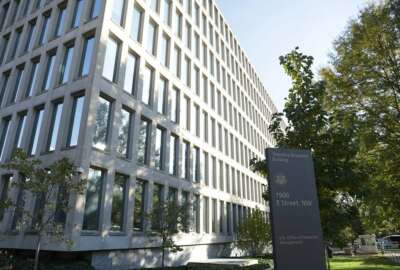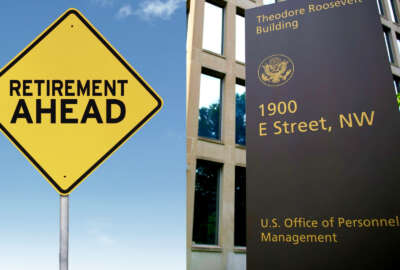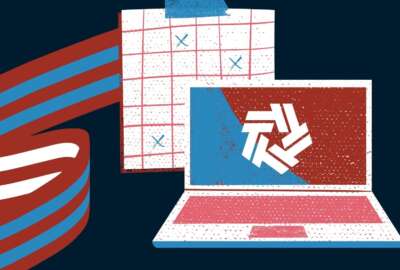What individual federal employees can do, to improve customer experience
It's the oldest challenge in government and business: How to make things easier for customers. In the digital age, customer service has evolved into something m...
It’s the oldest challenge in government and business: How to make things easier for customers. In the digital age, customer service has evolved into something more ambitious: customer experience (CX). CX asks, among other things, how you get the idea of better service or experience down to the individual employee. To get some ideas, the Federal Drive with Tom Temin spoke with Office of Personnel Management digital services expert Beth Martin.
Interview Transcript:
Tom Temin What is the latest thinking? What is OPM doing these days? There’s an executive order about a year ago on customer experience. It’s in the president’s management agenda. It’s in all of their management agendas, pretty much what’s going on these days.
Beth Martin We have two flagship activities that are undergoing. We have the OPM modernization. That’s OPM.gov, that’s also our intranet. And we even have a strategic goal speaking to that. So we are taking this very seriously, obviously. We also have another effort underway dealing with the Postal Service’s health benefits program, and that will be a really exciting development that we’ll finish up later this fall for the postal services workers and their annuity and some family members.
Tom Temin And just review for us what the goals of the OPM CX modernization are. That would be, presumably for federal employees writ large.
Beth Martin Yes. For federal employees who want to choose their health benefits, to choose their retirement benefits, for people who are considering coming into federal service, who want to see what’s available to them. All federal employees are our customers, and our federal retirees are our customers. And anyone who’s looking to have a federal job or do business with OPM or our customers.
Tom Temin And you mentioned intranet. It was the second phase in agencies and organizations putting their stuff out on the public internet. They said, well, we could do this internally also. But since all of this, there’s another development called artificial intelligence. Is that coming into this idea of understanding what a person is looking for and therefore revving up the intranet such that it can give more detailed information to that person, even though it may not be on a formal website. Does that make sense?
Beth Martin Yes. Are you thinking on the public side or on the intranet side?
Tom Temin Well, intranet side?
Beth Martin Well, there is an effort underway right now. It’s a pilot project and another colleague is heading that up. It’s a joint effort with the Air Force. So that is very exciting because that will be helping HR personnel. And so I think when we have more to share about that, that will be really exciting that we can talk more about that and how it can help streamline efforts.
Tom Temin Because if you look at the OPM website, it is extensive. Even just it’s coming in from the public as I do, just to see what do they exactly say about this day or that day type of thing. And there’s always documents linked and they in turn linked to other documents. Eventually you get to the statutes. It’s pretty deep what you offer, but it’s not all that easy to navigate or it might take a lot of time. I guess, is one of the gambits you’re thinking of, such that a natural language query could find all of those documents, assemble them for a person, and then maybe provide an answer that’s generated. It would be just for that question, but it wouldn’t necessarily be a page on an intranet.
Beth Martin Can we steal that idea? Tom? That’s a great idea.
Tom Temin It’s not original. I just heard it from somebody else. But well, tell us what you do plan right now. What’s the status of your own modernization?
Beth Martin I think in terms of modernizing it, going to the cloud, obviously we’re working hard on that to modernize legacy systems. And I don’t want to go too deep into that because that is not my area of expertise. I am just sharing what I am aware of. We want to do better by our customers, and so we’re working hard to understand what customers need so that we can provide that in a more streamlined manner. As AI matures and access to it becomes more commonplace, we obviously need to wait for those guardrails for AI. And what you mentioned would be very interesting. And there’s a long term impact which came about with search engines, not too recently where they talked about, I need everything on this topic and the AI scrapes from those websites and then you lose traffic on those websites. So I think those are down the road kinds of concerns. Who is the authoritative source of that information? Because the search engines can get it wrong.
Tom Temin Yes, indeed they can. We’ve all been down those rabbit holes. We’re speaking with Beth Martin. She’s digital services expert and customer experience designer at OPM. And tell us about the ways that you are making sure you understand what it is. It’s hard to say the customer because with a workforce of a couple of million, everybody’s unique, literally. And has unique situations. So what’s your best strategy for determining what the journey map should look like and all of these things. When you have 2 million people or if you’re a large business, you might have 20 million or 200 million.
Beth Martin That’s a really good question. The first thing we need to do is to understand what our agency mission is. Going back to basics and making sure that we are delivering on what we’re supposed to be doing. Government’s mandate is to serve. So we need to serve. And in order to do that, we need to know what our mission is. And everything that we do needs to be tied to that mission. And we have strategic plans with strategic goals and objectives, and we need to be aware of those so that we are delivering on those. In the case of OPM, as with any other agency, once we understand that perspective, that will be the North Star to help orient who do we serve? Who are the primary people who need these services? And we need to do some research. We need to do user research. We need to do user interviews and really get a very good understanding of the target audience that we are trying to reach out to and make sure that we are delivering what they need. We are delivering the top services. There are many things that agencies do, but we need to do the things that we are charged to do well and stay in our lane.
Tom Temin So the idea then behind this is CX has to be very specific to the agency, in the case of federal agencies, and there’s no one way to do it that fits everybody.
Beth Martin Right. Because we’re all serving different audiences and they will have different needs. You might have one agency who is serving people who have English language barrier, so that customer service need will be different than somebody who is providing internal services. So we really need to understand who our users are and their needs.
Tom Temin And you mentioned something else too. You serve individual federal employees. But really OPM also serves other agencies in official capacity, not individual capacity. And how does that complicate the CX journey?
Beth Martin Well, agencies are people too. There are people who have those needs. So again, we need to make sure that we are serving up what that agency is connecting with us for what we deliver.
Tom Temin And tell us more about the Postal Service effort. It’s in their health care area. Is that something that could maybe translate later on to government wide for OPM? Because everybody does health care and everybody obtains it one way or another?
Beth Martin Yes. It’s a very complex process. When I first joined the OPM about 18 months ago, I was involved in a discovery effort where we were just looking at one aspect of several different processes for this larger effort of delivering service, and I really grew to appreciate it. I have family members who are involved in different aspects of the health care system, and I’ve worked at Health and Human Services and FDA, so I had some appreciation of what’s involved, but I had no clear understanding of the complexity of just this one aspect of it. So in this one particular case, the effort was for insurance carriers to offer up the three different health plans that they wanted to do that. And that is a contract, a bid process, and getting that information into a portal. And then OPM takes that and works that communicates with the health insurance company about negotiating, and then they award the contract. One I learned how that process went. And two, there were so many people involved in so many decisions. It really gives you an appreciation for how complex it is. And just mapping that whole journey was an astounding process. And doing that again for 5 or 6 more other major processes and getting all of those steps mapped and then looking at how can we streamline this? How could we make it easy for us? How can we make it easy for the insurance companies to come in and offer this? And by extension, how can we make this a better process for everybody involved? Because our customers in this case, are the insurance companies wanting to do business with us, which will ultimately help us give better service to the people who want the insurance plans.
Tom Temin Sure. So in trying to get to a better CX, you can also get to a better process.
Beth Martin Exactly.
Copyright © 2024 Federal News Network. All rights reserved. This website is not intended for users located within the European Economic Area.
Tom Temin is host of the Federal Drive and has been providing insight on federal technology and management issues for more than 30 years.
Follow @tteminWFED






